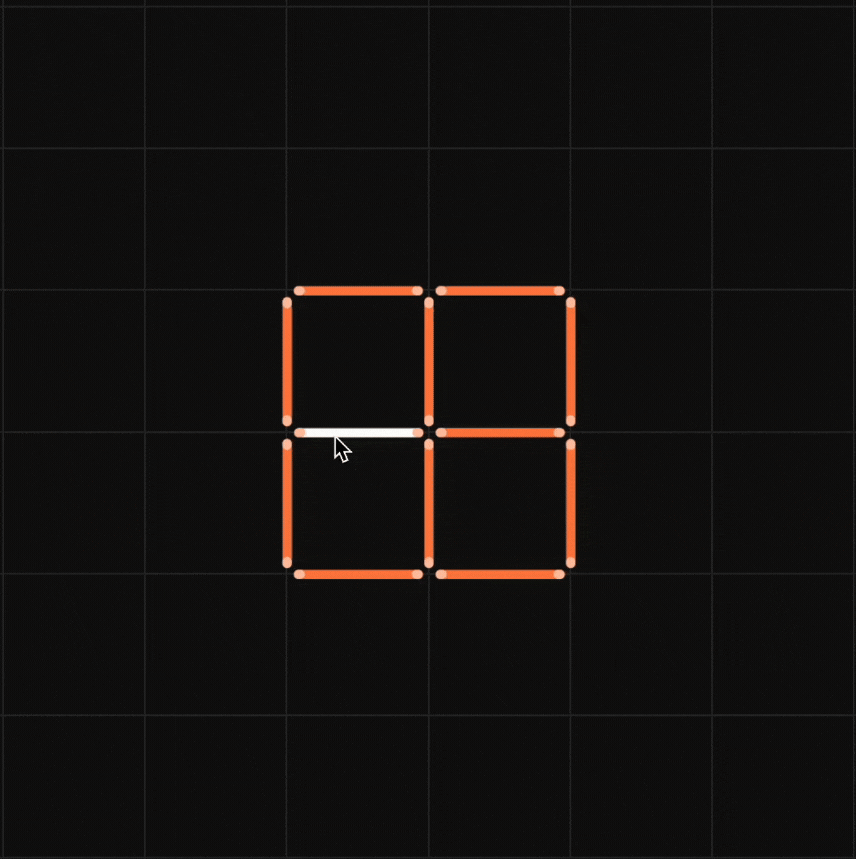

Pictograph
In Statistics, pictographs are charts that are used to represent data using icons and images relevant to the data. A key is often included in a pictograph that indicates what each icon or image represents. All icons in the pictogram must be of the same size, but we can use the fraction of an icon to show the respective fraction of that amount. Let us understand the concept of pictographs using examples.
| 1. | What is Pictograph? |
| 2. | How to Make a Pictograph? |
| 3. | Pictograph Advantages |
| 4. | FAQs on Pictograph |
What is Pictograph?
In mathematics, a pictograph, also known as a pictogram, is the pictorial representation of data using images, icons, or symbols. We can represent the frequency of data while using symbols or images that are relevant using a pictograph. Pictographs are one of the simplest ways of representing data.
Pictograph Definition
"A pictograph is a representation of data using images or symbols." Pictographs in maths are typically used in concepts like data handling. They help in laying the foundation for data interpretation based on pictorial information. Now after knowing the pictograph definition, let us understand pictographs using a scenario.
Pictograph Example
A survey was conducted for 40 children by a fast food junction to understand the demand for different flavors of pizza available in their outlet. The results were as follows:

Can you identify the most loved flavor by observing the above table? If 1 full pizza represents 4 children, then what would a quarter slice represent? The scenario that we discussed above represents information in a pictographic manner. Here, the symbol for a full pizza is used to represent data (i.e. the number of students). We need to do simple math to understand how many children voted for each of the flavors. Multiply the number of symbols for the given flavor with the value of each symbol.
For example, the number of children who liked Pepperoni = 2 14 × 4 = 2 × 4 + (1/4) × 4 = 8 + 1 = 9
Key to a Pictograph
We use a key to denote the value of the symbol. In the above example, the key was 1 icon of the pizza representing 4 children.
Important Notes on Pictograph:
- All the symbols/icons must be of the same size.
- A fraction of an icon can also be used to show data.
Thus, after going through the above pictograph example, we come to the basic formula which is used to find the value of the data of the categories given in the chart/table.
Value of a category = Product of the number of times the symbol is used and the value of each symbol. If we denote the number of times by 'N', and the value of each symbol by 'S', we get:
Value of a category = N × S
How to Make a Pictograph?
Let us take an example. We will represent the average hours spent by students on different activities.
The following table gives this data:
| Activity | Time Spent |
|---|---|
| Online Classes | 4 hours |
| Gadgets | 4 hours |
| Self Study | 1 hour |
| Sleep | 10 hours |
| Others | 5 hours |
The below-given steps can be followed to represent the data given in the table in the form of a pictograph.
- Collect Data: Firstly, we need to collect the data of the different categories we want to represent. We then form a table or list. In the above example, the data is already provided in the form of a table.
- Review the data and Pick a symbol: Review the collected data and based on it pick a symbol or picture that accurately represents the data. For drawing a pictograph to represent the number of hours spent on a particular activity, we can use an hourglass as a symbol.
- Assign a Key: Based on the frequency of the data, decide the frequency for one symbol. This can be done by setting a numerical value that one symbol will represent. This key or numerical value must be written along with the pictograph. Example one icon of an hourglass represents. This is the key to the pictograph.
- Draw the pictograph: Finally, drawing the pictograph by initially drawing two columns that represent the category and the data. Then, draw the actual symbols representing the frequencies. These symbols can be drawn as fractions as well if the frequency is not a whole number or based on the key.
- Review Pictograph: Check the labeling and review your pictograph and make sure it correctly represents the data.

Reading Pictograph
Let us understand how to read a pictograph based on the pictograph we created above by answering few questions.
Example: Based on the observations from the above pictograph, answer the following questions.
1. What is the average time spent by a child on gadgets?
2. How many hours on average does a child sleep during the lockdown on a weekday?
3. What is the total average time spent by a child on academics?
4. How many hours are spent on other activities?
Answers:
2. An average child sleeps for 5 × 2 = 10 hours on a weekday during the lockdown.
3. Total time taken for academics = 2 × 2 + (1/2) × 2 = 4 + 1 = 5 hours.
4. Time spent on other activities = 2 × 2 + (1)(2) × 2 = 4 + 1 = 5 hours.
Advantages of Pictograph
Pictographs are widely used in maths. There are several advantages to using pictographs in maths. These are some of the advantages.
- They can be used primarily for making early learners associate objects with numbers.
- They help in visually formatting statistics.
- They make data visually interesting and easy to understand.
- Representing data pictographic way can be useful for representing a large amount of data.
Challenging Question on Pictograph:
Four friends are playing with 44 pieces of the puzzle. The number of pieces that each of them has is recorded in the form of a pictograph below. But there is some information missing. Can you find the missing entries using the given hints?

- 1 icon (1 puzzle piece) = ________.
- How many pieces do Tom and Jerry have, if they both have an equal number of pieces?
Related Articles:
Check out these interesting articles to know more about pictographs and its related topics.
Pictograph Examples
-
Example 1: The table below is in the form of a pictorial graph. It shows the number of apples of different varieties (in Kilogram) being sold at a store in a given month.

Based on the pictograph, answer the following questions.
(a) Which variety of apple is the best seller?
(b) How many more kilograms of Fuji apples were sold compared to Ambrosia?
(c) What is the total quantity of apples sold by the store?
Solution:
(a) Red Delicious is the best seller.
(b) Quantity of Fuji = 3 × 4 = 12 kg
Quantity of Ambrosia = 2 (1/2) × 4 = 2 × 4 + (1/2) × 4 = 8 + 2 = 10 kg
Difference = 12 - 10 = 2 kg(c) Total quantity of apples sold by the store = 16 × 4 = 64 kg.
-
Example 2: The following table shows information about the modes of transport used by students to commute to school.

Answer the following questions based on the information given above.
1. How many students commute by car?
2. Which is the most commonly used mode of transport?
3. Which is the least preferred mode to reach school?
Solution:
Answer 1: No. of students who commute by car = 4 × 4 = 16.
Answer 2: The bus is the most commonly used mode of transport.Answer 3: The least preferred mode to reach school is a bicycle.
-
Example 3: The following pictograph shows the number of bananas and oranges consumed by students of three schools in a locality.

Based on the above information, answer the following questions.
1. In which school the total number of bananas consumed is more than oranges?
Answer: In school A, the total number of bananas consumed is more than oranges.
2. What is the difference between the number of oranges consumed by students of schools A and C?
Answer: Number of oranges consumed in school A = 4 × 50 = 200
Number of oranges consumed in school C = 6 × 50 = 300
Difference = 300 - 200 = 100
3. In which school the number of bananas and oranges consumed is the same?
Answer: In school B, the number of bananas and oranges consumed is the same.
4. How many fruits were consumed by children of school C?
Answer: Number of fruits consumed by children of school C = No. of bananas + No. of oranges.
= 3 × 50 + 6 × 50 = 150 + 300 = 450

FAQs on Pictograph
What is a Pictograph? Give Examples.
A pictograph is a representation of data using images or symbols. We see these pictographs in many real-life situations. A simple example is the star rating that is given by customers for items purchased. Consider a case when out of 5 stars, there are 3.5 stars highlighted. If it is given that 1 star = 20 points, then the rating by the customer will be 20 × 3.5 = 70 out of 20 × 5 = 100.
What is a Pictograph Chart?
A pictograph chart is a chart that uses icons or symbols to represent information or data. Each icon represents a certain frequency based on the key.
What is a Pictograph Used for?
A pictograph is used to represent data in the form of pictures or icons which makes the presentation more interesting and easier to understand.
What is Used in Pictograph?
In pictographs, we use icons and images to represent the data. These images or icons have a key, where 1 icon represents a certain frequency. Using this key, data can be represented in a tabular form in a pictograph.
What are the Advantages of a Pictograph?
There are many advantages of using a pictograph as a method to represent the given data.
- Pictographs can be used primarily for making early learners associate objects with numbers.
- They help in visually formatting statistical data.
- They help in representing the data visually interesting and easy to understand.
- They can be useful for representing a large amount of data.
What is Key in a Pictograph?
In a pictograph, we use a key to denote the value of the symbol. This key is used in representing the frequency of any category in a pictograph.
How to Draw a Pictograph?
We can draw a pictograph using simple steps,
- Collect and review the data
- Pick a symbol to represent the frequency of the category based on the given data.
- Analyze the collected data and assign a key
- Draw the pictograph in a tabular format
- Finally, review the pictograph.
How do you Find the Key to a Pictograph?
The key to a pictograph is used to find the frequency of the information the graph depicts for a particular category. We can choose a suitable key for a pictograph depending upon the values in the data set.
Who Discovered Pictograph?
Pictographs were used as the earliest known form of writing and are believed to have been discovered in Egypt and Mesopotamia from before 3000 BC.
visual curriculum